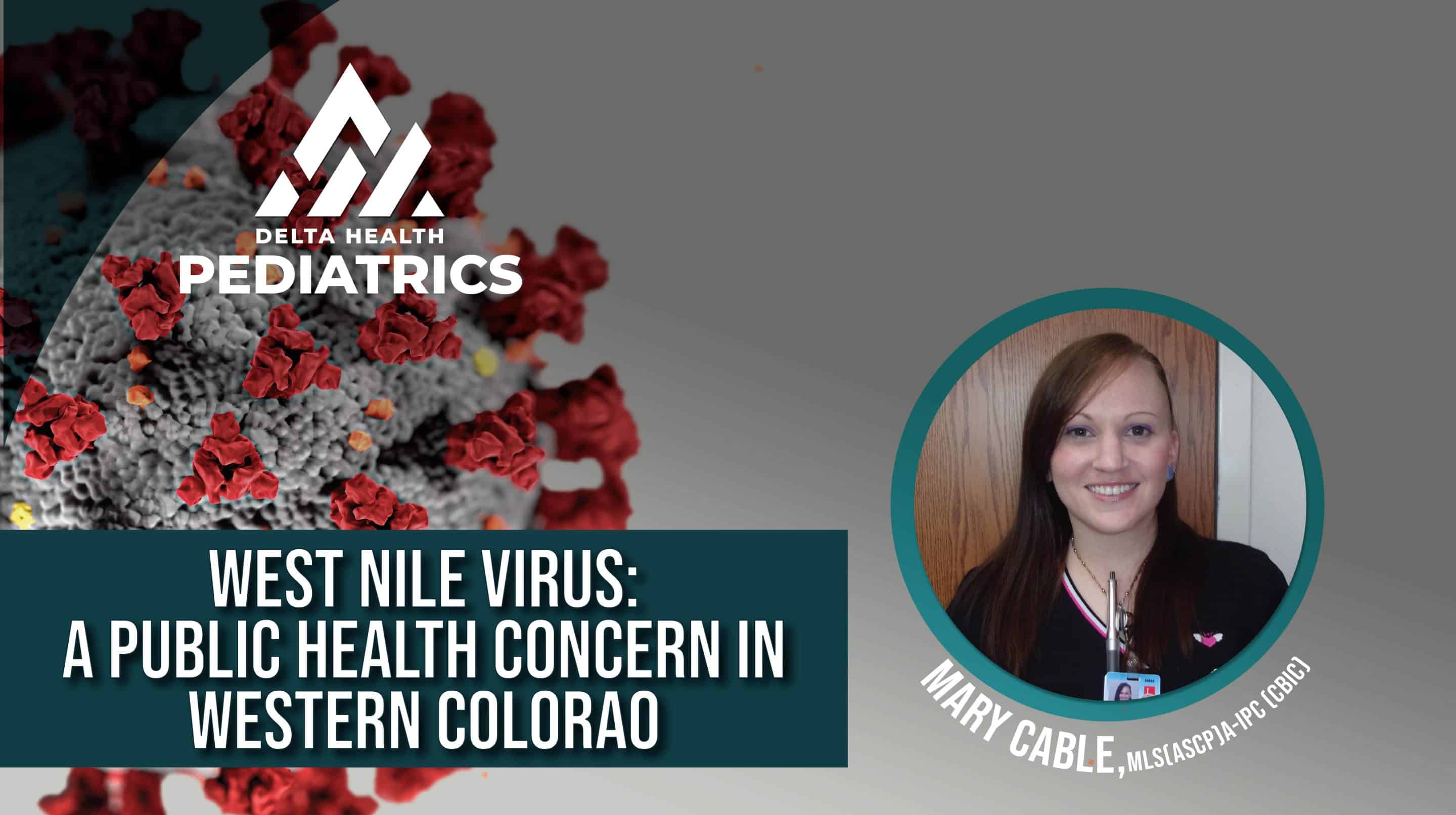Mary Cable, BS MLS(ASCP)CM, a-IPC(CBIC), Microbiology Supervisor/Infection Preventionist
Last year, the Colorado Department of Public Health and Environment (CDPHE) reported a total of 206 cases of people affected by the West Nile virus. Twenty of those cases resulted in fatality, and two of those fatalities were residents of Delta County. The CDPHE also reported an increase of neuroinvasive disease associated with West Nile virus infection for 2022 though it is not yet firmly understood why. We humans are not the only ones looking to enjoy the benefits of warmer weather; mosquitos (the vectors that transmit West Nile virus) can also thrive in the warm, humid environments created by the spring melt. As the much anticipated summer season approaches following an unusually wet and snowy winter, let’s take this opportunity to learn more about West Nile virus, its impact on western Colorado and Delta County, and what we can do to protect our community at home.
West Nile virus (WNV) is a single-stranded RNA flavivirus, the same genus that includes the Zika, dengue, and yellow fever viruses. It was first identified in humans in 1937 in Uganda. The first case reported in the United States occurred in 1999 in Queens, New York. This virus is now considered endemic to many parts of the world and has been considered endemic in Colorado since 2004. It is transmitted to humans via mosquito bite, specifically from the Culex tarsalis and Culex pipiens species, and is acquired by mosquitos through feeding on infected birds, which are the primary hosts for the virus. Human-to-human transmission does not occur with WNV.
Most cases of WNV disease occur during the months in which mosquitos are most active, usually from August to September. However, if weather and environmental conditions are favorable for mosquito breeding and growth, cases can occur as early as May and as late as December. While most West Nile virus infections are asymptomatic (about 70-80%), when clinical disease does occur, the symptoms can range from mild fever to severe encephalitis and neuroinvasive disease which can result in death. The typical incubation period for infection is between 2 to 6 days, but can range from 2 to 14 days total. Sadly, there is no specific treatment for WNV, and severe illness usually requires hospitalized care.
Prevention is key, especially for our seniors and people with immunosuppressing medical conditions who are at a higher risk of severe illness. Currently, there is no vaccine for human use available to prevent West Nile virus infection. Public and environmental health agencies use measures like mosquito testing and abatement to help monitor and control the spread of West Nile virus, but what can individuals do to prevent infection and keep their communities safe?
The best ways to prevent infection with West Nile virus are to prevent mosquito biting and breeding. Wearing long sleeves, pants, or protective covers made of mosquito netting when enjoying the Colorado outdoors during warm months are effective strategies for preventing mosquito bites. Insect repellents may be more useful to prevent contact and biting in areas where mosquito concentration is higher and during the times of day when mosquitos are most active (dawn and dusk). The CDC and EPA recommend using a repellent with one of the following ingredients to prevent mosquito bites: DEET, picaridin, oil of lemon eucalyptus, p-Methane-3,8-diol (found in oil of lemon eucalyptus), IR3535, and 2-Undecanone. Products like citronella candles, repellent bracelets, and sound-based repellents are less than half as effective at disorienting mosquito scent receptors, which they use to navigate for a meal, and are not recommended to prevent mosquito bites.
Mosquitos will grow and develop in as few as 3 to 5 days in almost any source of standing water, even if only ¼ inch deep. Eliminating sources of standing water around your home is an important and effective strategy for reducing mosquito populations. Items like unused planting pots and dishes, water features without moving water, unused tires, stagnant puddles, or any other areas around the home or garden where you observe water standing for more than a few days can serve as breeding grounds for mosquitos. Keeping these potential sources dry or sheltered during rainfall will reduce available breeding sources for mosquitos and can help reduce their spread of West Nile virus.
Awareness of this virus, how it’s transmitted, and how we can prevent infection are crucial and effective components to reducing case numbers. For further information on West Nile virus, its prevalence in Colorado, and how to protect your health from WNV infection, the CDC and CDPHE websites are excellent resources.
- CDC: https://www.cdc.gov/westnile/index.html
- WNV CO Data: https://cdphe.colorado.gov/animal-related-diseases/west-nile-virus/west-nile-virus-data
- WNV and your health: https://cdphe.colorado.gov/animal-related-diseases/west-nile-virus/west-nile-virus-and-your-health


